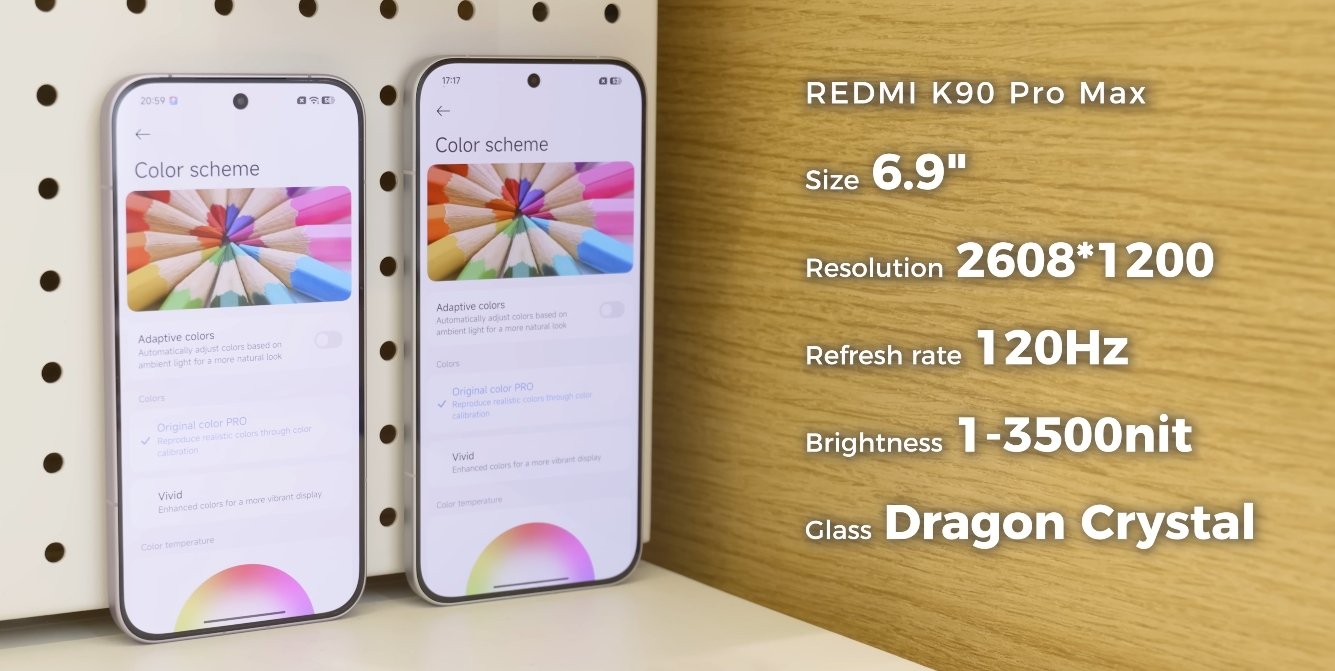What UK Buyers Can Expect from Redmi K90 Pro Max Software Updates
The Redmi K90 Pro Max has made waves as one of Xiaomi’s most ambitious smartphones in 2025, not just for its hardware but for the new software it carries—HyperOS 3, based on Android 16. For UK buyers, this raises a key question: how reliable and long-lasting will Xiaomi’s software support be under the new HyperOS framework? As the company shifts its approach toward a more unified global ecosystem, understanding what to expect from future updates, patches, and support timelines is essential before making a purchase.
At launch, the Redmi K90 Pro Max is preinstalled with HyperOS 3, the latest version of Xiaomi’s operating system designed to replace MIUI entirely. This version emphasizes smoother animations, better battery efficiency, and a refreshed visual design that integrates AI-driven optimizations. For UK consumers, this means they are getting Xiaomi’s newest and most advanced platform right out of the box, ensuring a more modern experience than older models that are still awaiting updates. HyperOS 3 also improves cross-device connectivity, which is especially appealing to users who already own Xiaomi tablets, wearables, or smart home devices.
When it comes to regional software support, UK buyers should keep in mind that global and Chinese variants of Xiaomi phones often follow different update schedules. The Redmi K90 Pro Max initially launched in China, but global firmware versions tend to arrive a few months later with localized optimizations and Google Mobile Services preinstalled. For the UK market, this global version will likely receive region-specific enhancements such as European network compatibility, preloaded Google apps, and OTA updates tailored for UK carriers. Choosing the global variant ensures access to regular software patches and proper certification for local 4G and 5G networks.

One major concern for UK buyers has always been the longevity of Xiaomi’s update policy. While companies like Samsung and Google now promise up to seven years of updates, Xiaomi is gradually improving its track record. The Redmi K90 Pro Max, as a flagship-tier device under the Redmi brand, is expected to receive at least three major Android version upgrades and four to five years of security patches. If this policy holds, owners could enjoy support until roughly 2029, which would represent a meaningful improvement over older Redmi models that typically saw shorter update lifespans.
HyperOS 3 also represents a shift in how Xiaomi manages global software updates. The company has committed to delivering more synchronized rollouts across regions, aiming to reduce the long delays that global users once experienced. For the UK, this means software updates should no longer trail China’s schedule by several months. Xiaomi’s goal with HyperOS is to unify codebases, making updates faster and more stable. As a result, UK users of the Redmi K90 Pro Max can expect fewer bugs and better optimization for Western apps and services, including smoother operation with the Google ecosystem and improved security integration.
Another key aspect to consider is HyperOS 3’s focus on AI and system intelligence. UK buyers can expect the Redmi K90 Pro Max to include adaptive performance tools that learn from user habits to improve app launch times and battery efficiency. The AI engine in HyperOS 3 also enhances photo editing, voice interaction, and background system management. These improvements make the system more responsive and energy-efficient over time, aligning with what UK users expect from modern flagships. It’s also worth noting that Xiaomi is introducing more EU-compliant privacy controls under this update, providing clearer permission settings and data management tools in line with UK regulations.
Still, there are differences between imported Chinese models and the official global variant that UK buyers should be aware of. Chinese units often lack Google Play services and use firmware optimized for local markets. While it’s possible to install Google apps manually, updates may arrive slower and sometimes cause compatibility issues. In contrast, the global variant comes with full Google integration and regional network optimization, which is critical for stable connectivity with UK carriers like EE, Vodafone, and O2. Therefore, buyers in the UK are advised to wait for the official global release rather than importing from China, even if the initial price appears more attractive.
The HyperOS 3 environment also marks a new beginning for Xiaomi’s software ecosystem, introducing extended device synchronization features similar to Apple’s Continuity system. UK users can expect seamless interaction between their Redmi K90 Pro Max, tablets, and smart TVs. This growing ecosystem approach makes Xiaomi’s devices more appealing to those who value long-term software stability and cross-device functionality.
In conclusion, the Redmi K90 Pro Max with HyperOS 3 offers UK buyers one of the strongest software experiences ever seen from Xiaomi’s Redmi series. With Android 16 at its core, improved privacy standards, and a longer update commitment, it promises a smooth and reliable user experience for years to come. While buyers should still prefer the official global version for consistent OTA updates and full UK compatibility, HyperOS 3 demonstrates Xiaomi’s effort to deliver better support and faster updates worldwide. For users in the UK seeking a high-performance flagship alternative with dependable software longevity, the Redmi K90 Pro Max stands out as one of the most future-ready options in 2025.

